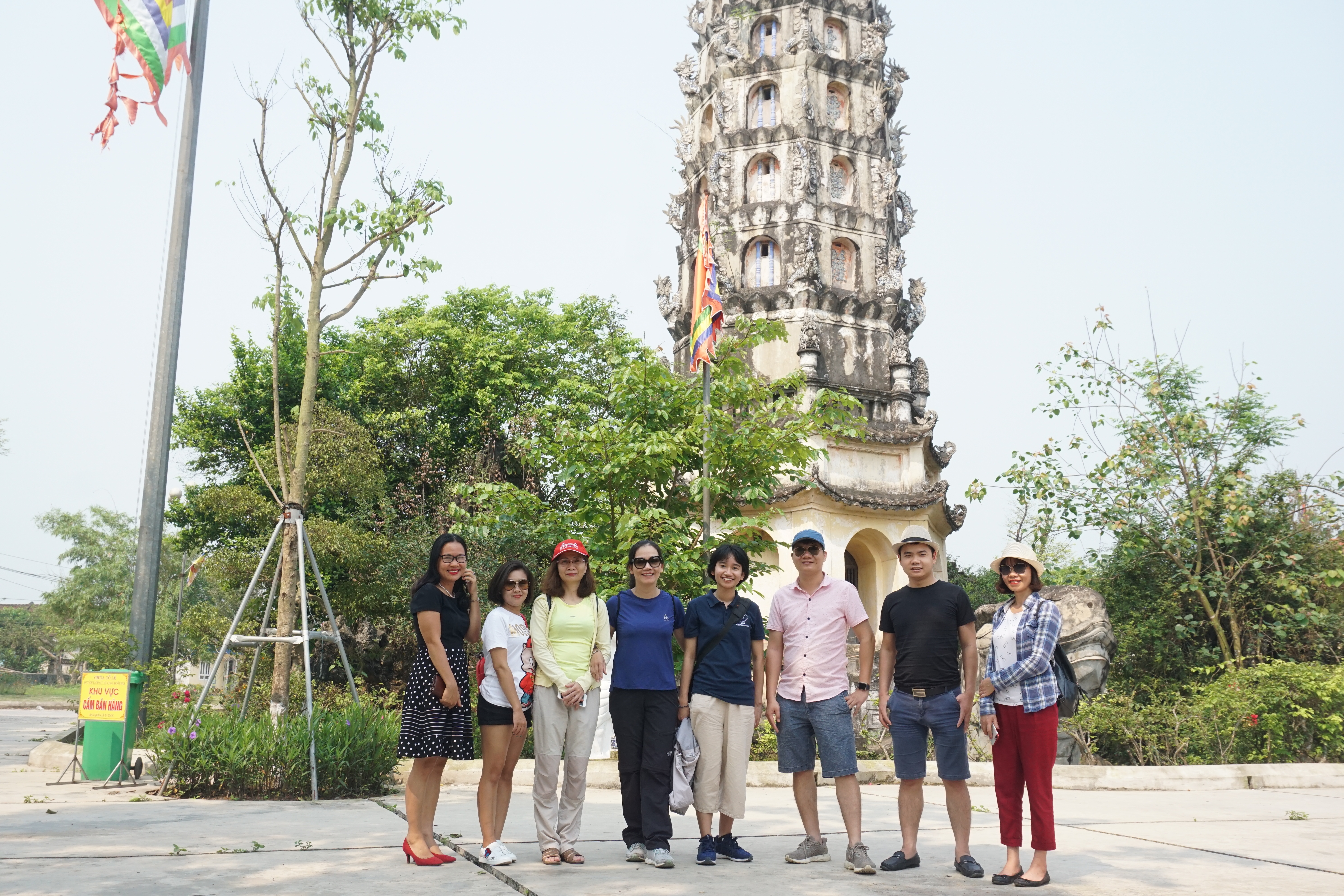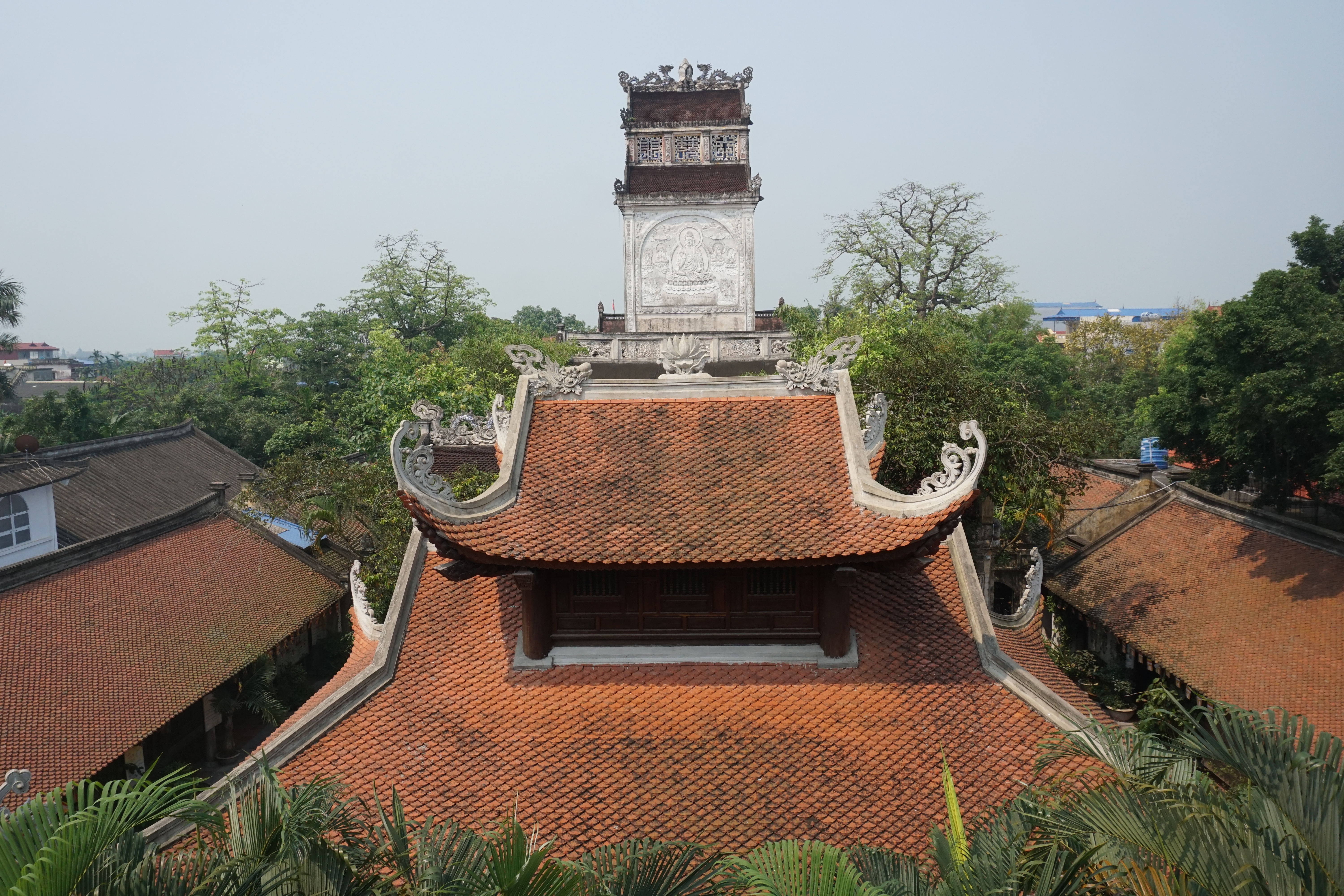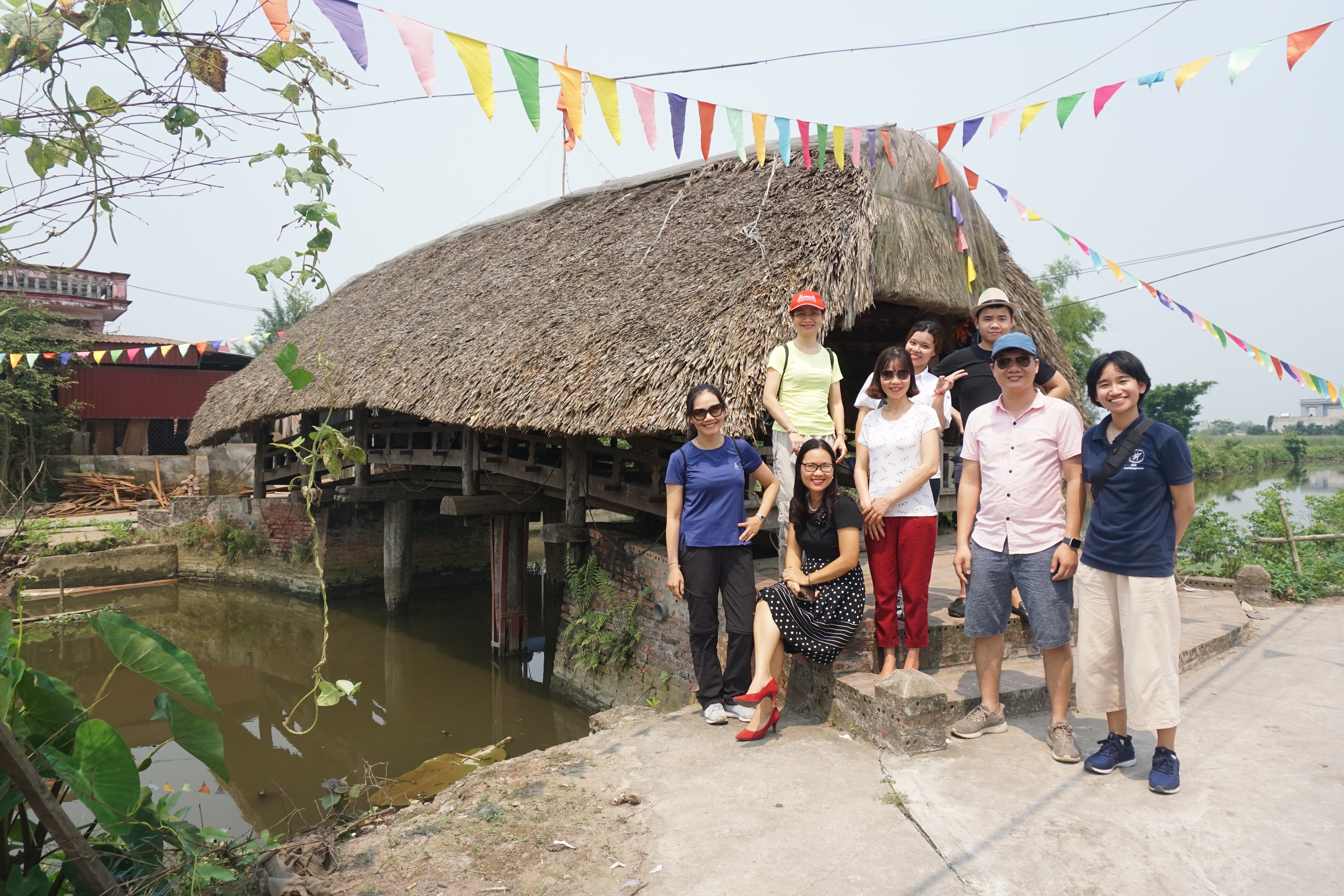On April 20-21, members of RTC Vietnam had a FAM Trip to Ecohost Hai Hau, Nam Ninh.
During the 2 days, RTC Vietnam visited the most impressive tourist attractions in Nam Dinh such as Co Le pagoda, over 500-year-old tile bridge, Co Chat silk reeling village, Pham Phao church, Hai Ninh trumpet village, etc. and at the same time experience the quiet and relaxing atmosphere in the ancient houses in Northern Vietnam style at Ecohost Hai Hau.
In the early summer sun on the first day of the program, the inspection group visited Co Le pagoda – a special temple, worshiping Buddha but built in the Gothic style.
The next stop is Co Chat silk reeling village. The traditional village located along the Ninh Co River, which is famous for mulberry cultivation, silk reeling, silk weaving, is the place to supply quality silk for local silk weaving villages in Vietnam.
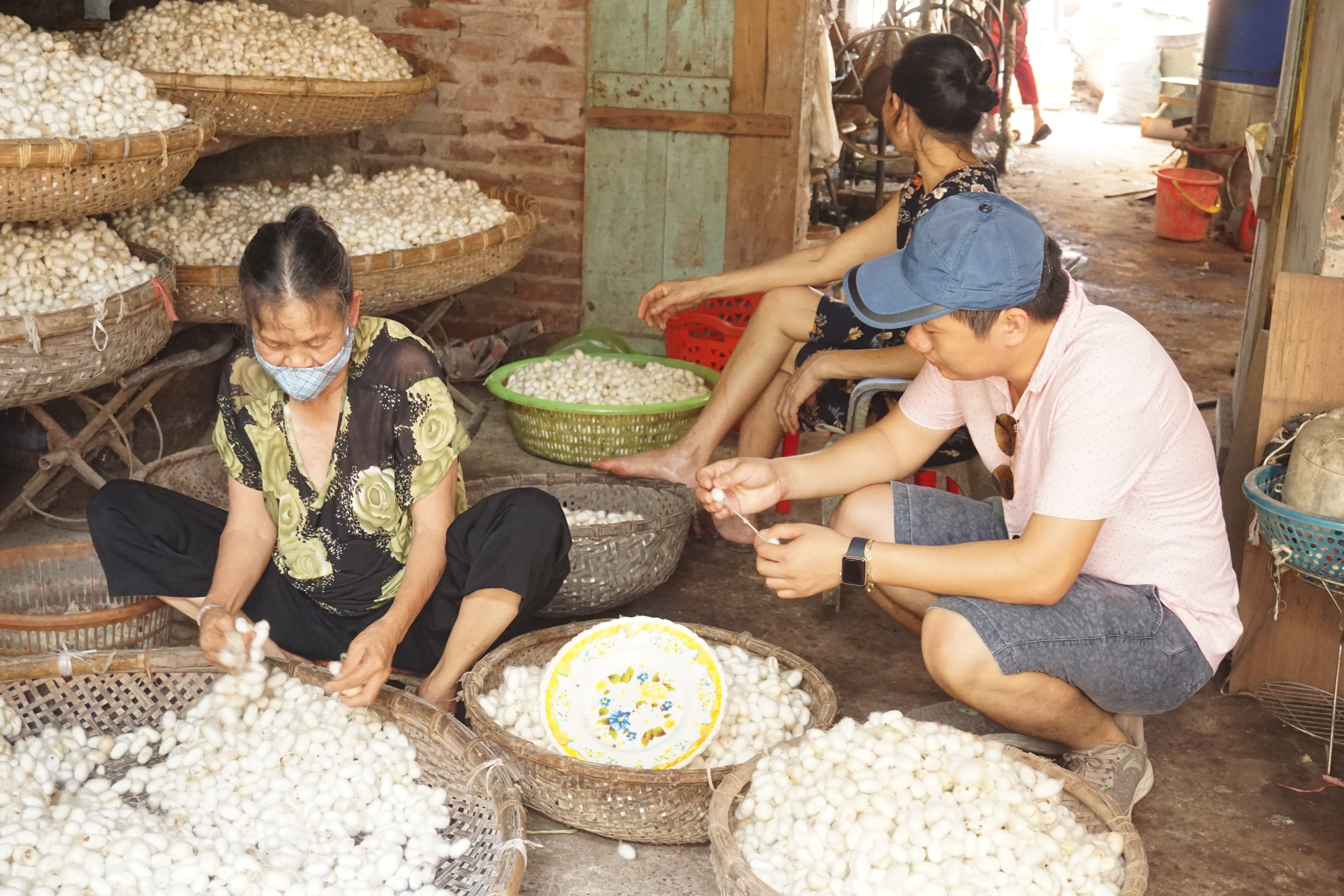
Co Chat silk reeling village
On the way to EcoHost Hai Hau, the group also visited Nam Dinh’s special bridges such as stone bridges, leaf bridges, etc. and was introduced by Ecohost’s enthusiastic toủ guides interesting stories about culture of bridges and family culture in Nam Dinh.
In the afternoon, the group began their journey to visit Pham Phao church by bicycle, copper trumpet village, Hai Anh tile bridge, enjoy the fresh air and watch the peaceful life of Hai Hau people.
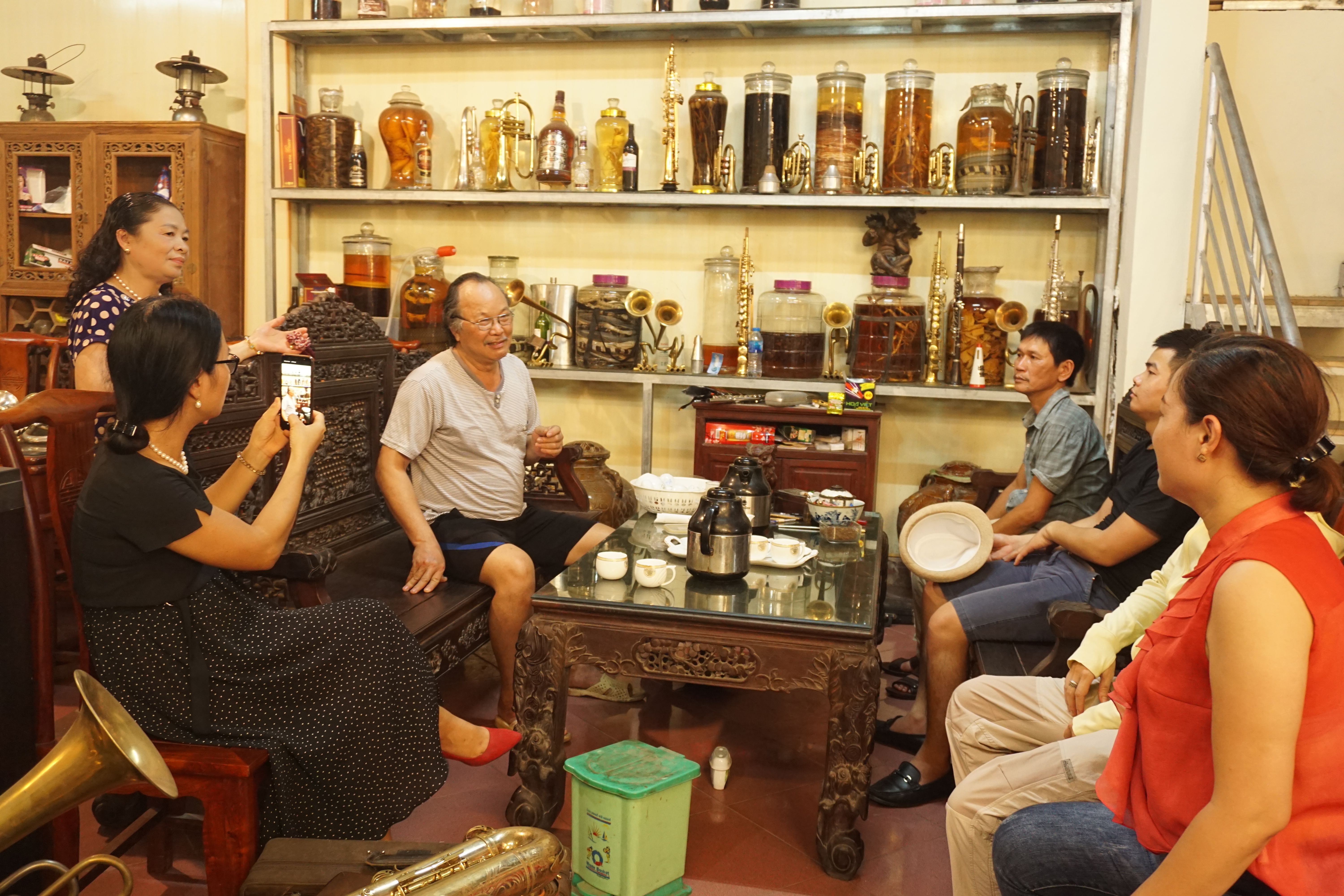
Visiting artisan Nguyen Van Cuong – one of the few artisans who still works as a brass trumpet
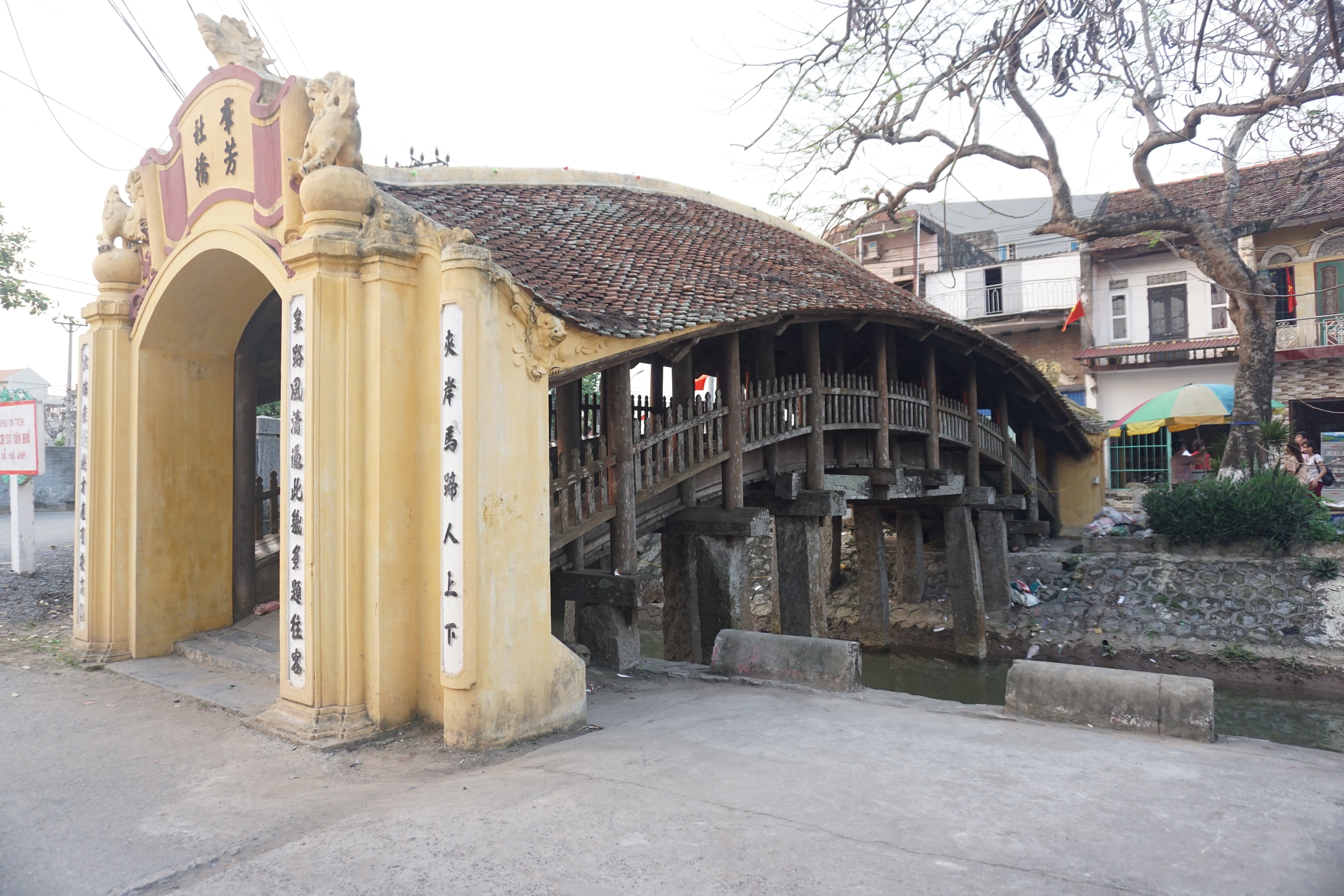
Hai Anh tile bridge was built in the 15th century
Built in the 15th century, Hai Anh Tile Bridge is associated with the reclamation of the sea, which is a testament to the prosperous but also peaceful period of the old Hai Hau land.
After a day of exciting experiences, the group returned to EcoHost Hai Hau to experience an ancient space in the middle of modern life. Ecohost emerges as a rustic and cozy atmosphere from the ancient houses of 3 Northern areas, fresh and cool space from orchards blended with birds singing to bring people to experience the moments. relax.
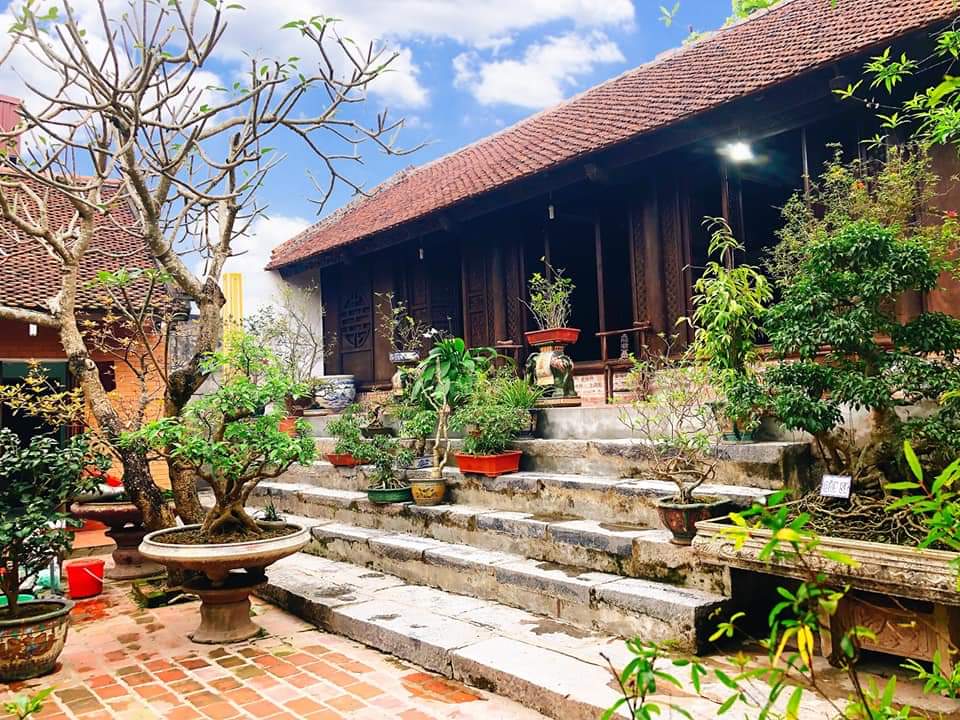
Northern ancient house space at Ecohost Hai Hau (photo: Ecohost)
On the second day of the journey, the team welcomed the dawn at the church of Hai Ly, visited houses making nets, saw people fishing on stilts – a unique way of fishing for fishermen in the coastal areas of Nam Dinh.
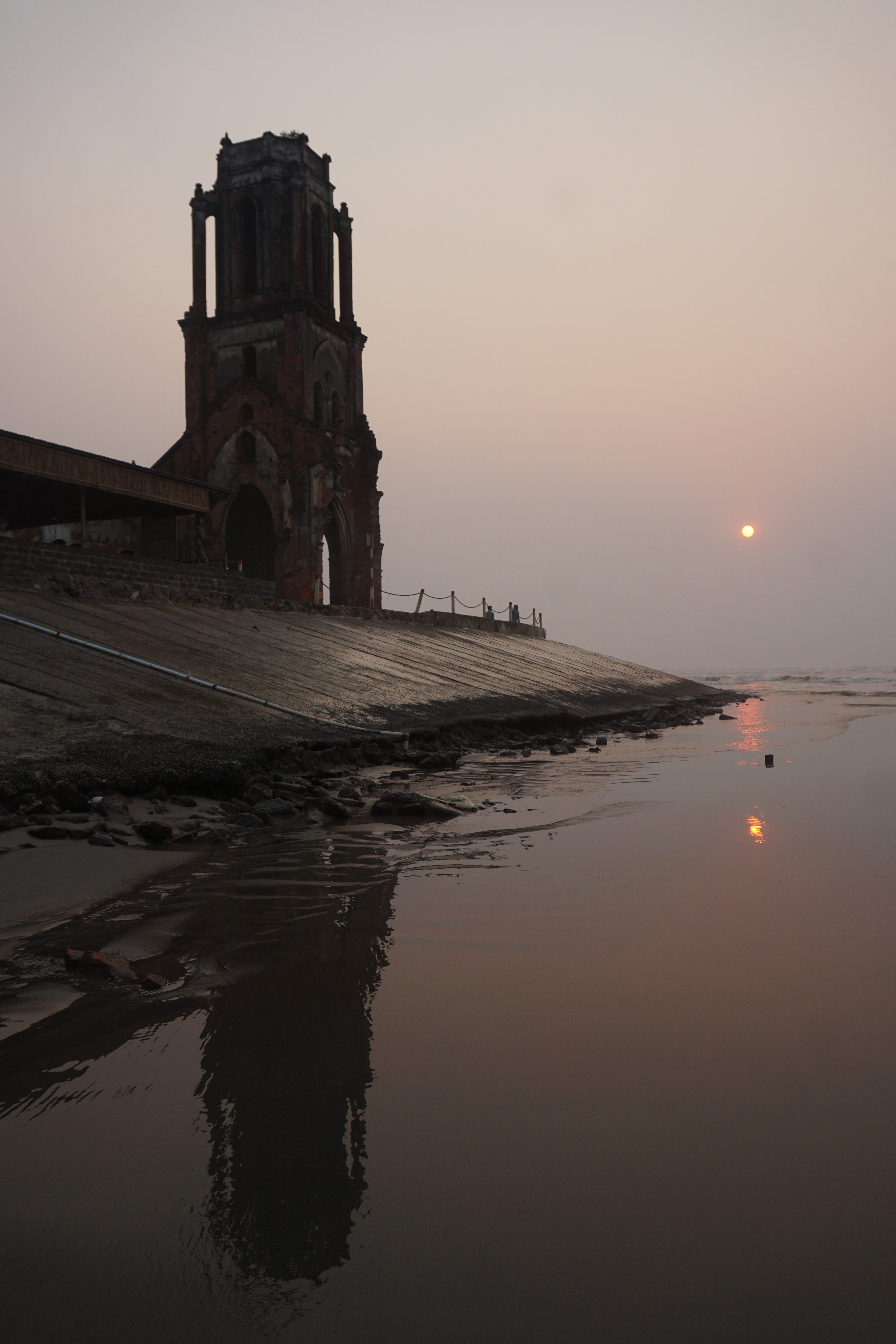
Hai Ly church
Hai Ly church is a testament to the sea encroachment here. According to historical records, in 1996, the sea began to invade inland for more than 1 km, making the village stretching along Xuong Dien beach disappeared. Some large structures on the sea, such as the church, were knocked down by waves. But only the church of St. Maria Madalena is still there without being knocked down by the waves but it is not as intact as before.
On the way back, the group visited the salt fields and saw how the white salt grains were granulated under the hands and labor of the coastal people.
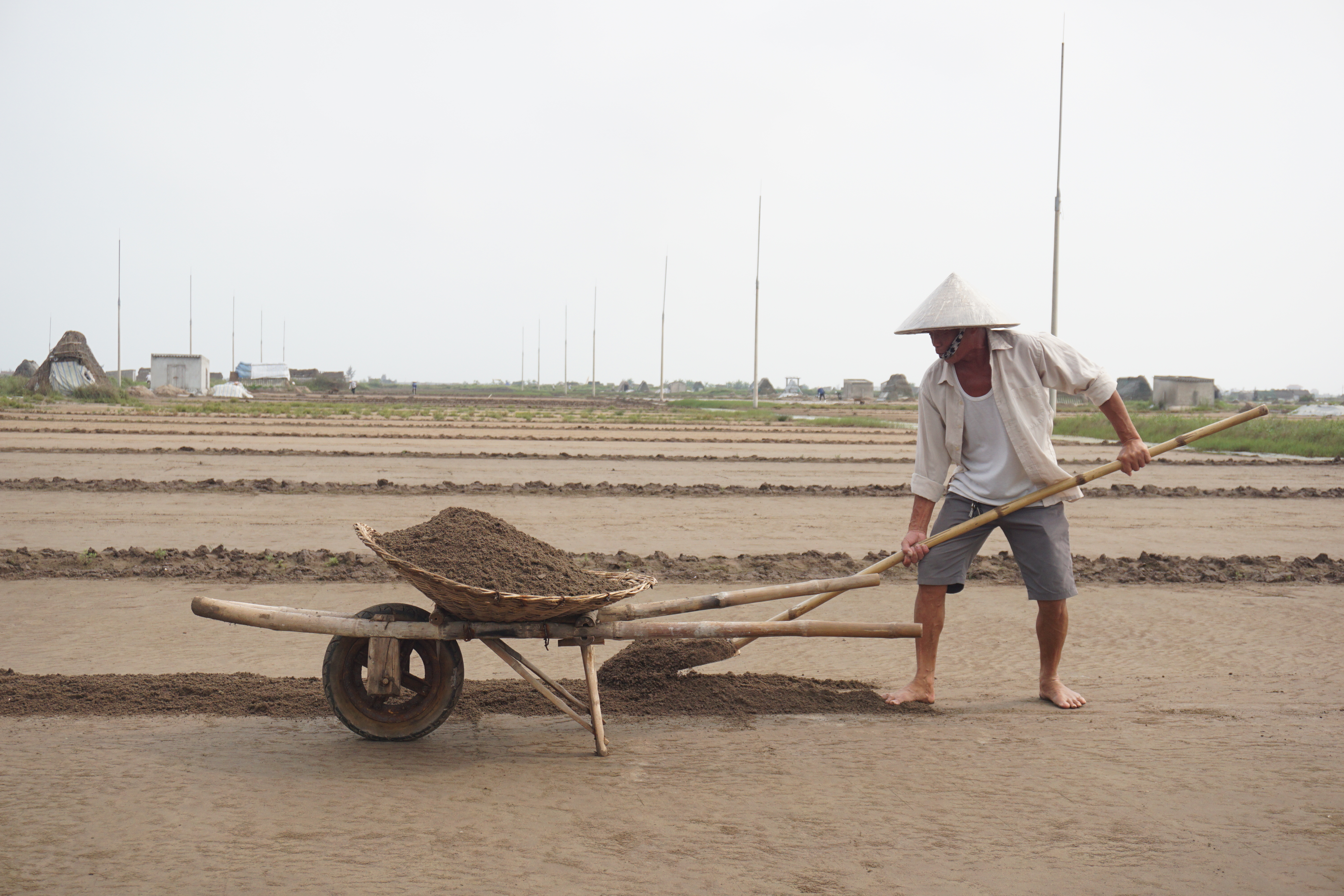
A salt farmer works happily in a sunny day
The 2-day-1-night trip gave RTC members interesting experiences and useful information about the new product. EcoHost Hai Hau’s products are newly exploited and identified as having great potential for future development, especially for the inbound market that wants to experience Vietnamese culture.










